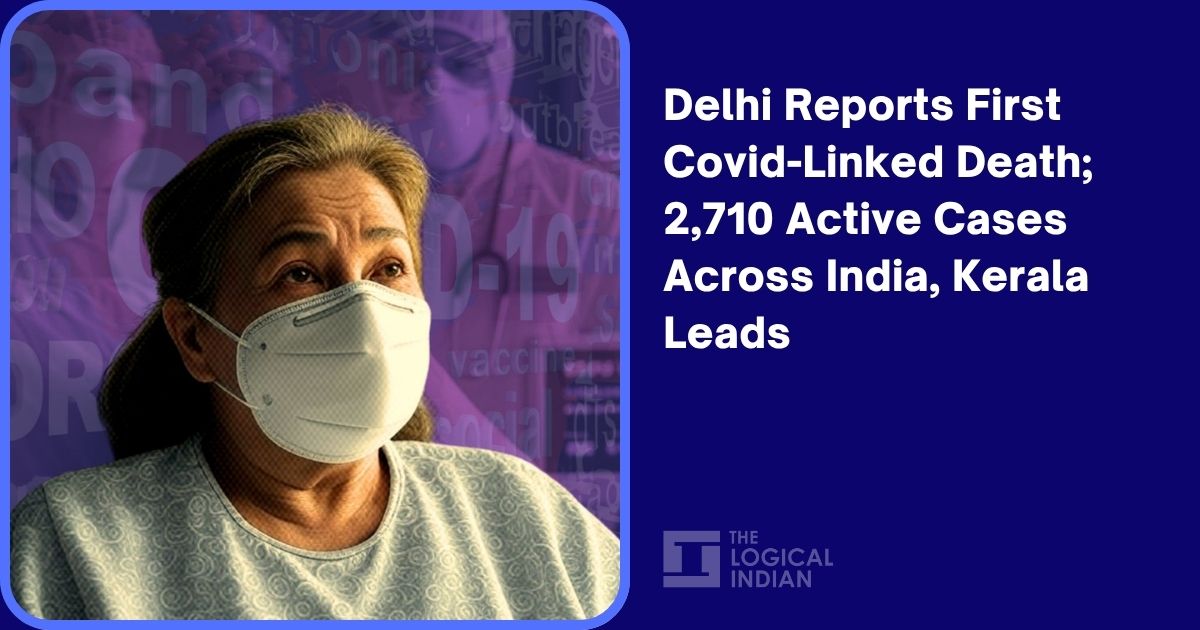Evolving COVID-19 Landscape and Public Health Advice

The landscape of COVID-19 continues to evolve with the emergence of new variants, ongoing vaccination efforts, and persistent health concerns. Recent data points to a summer surge in COVID-19 cases globally, impacting hospitalization rates, emergency room visits, and positive test percentages. While overall COVID-19 cases in the UK showed a slight decline in late June compared to previous weeks, a slight increase in hospital admissions was noted, underscoring the virus's continued presence and impact.
Several new variants have garnered attention due to their increased transmissibility and immune evasive properties. In the UK, the 'Stratus' variant, scientifically known as XFG and its spin-off XFG.3, rapidly gained dominance. Descended from the Omicron lineage, Stratus is a "recombinant" or "Frankenstein" strain, meaning it formed when an individual was co-infected with two different COVID strains. It accounted for approximately 10 percent of cases in May and surged to nearly 40 percent in England three weeks later in mid-June. The World Health Organization (WHO) has designated Stratus a "variant under monitoring," noting its significant global growth advantage, making up 22 percent of recorded cases worldwide. Professor Lawrence Young of Warwick University attributes Stratus's increased competitiveness to new spike mutations that enhance its ability to evade immune responses, warning of a potential new wave of infections due to waning population immunity.
Another highly contagious variant, 'Nimbus' (N.B.1.8.1), has also seen a significant rise, particularly in the UK and US. UKHSA data showed Nimbus increasing from 2 percent of cases in April to 17 percent in June, and later doubling from 4 percent in mid-May to 8 percent in early June. Lab studies suggest Nimbus is more efficient at infecting human cells and better at dodging the immune system. Coined by Canadian evolutionary biologist T Ryan Gregory, Nimbus originated in China and now comprises over a third of US cases and 10.7 percent of global infections, up from 2.5 percent in May. In the United States, 'FLiRT' variants, including KP.3.1.1, KP.3, and LB.1, have been responsible for the summer surge. KP.3.1.1, in particular, became the most common variant, accounting for nearly 28 percent of cases. Other notable variants include EG.5, also known as 'Eris,' an Omicron "grandchild" that became the most common variant in the US mid-summer, and BA.2.86, or 'Pirola,' which the WHO is also monitoring.
Despite the emergence of these new strains, the general symptoms of COVID-19 remain largely consistent. These include fever or chills, cough, shortness of breath or difficulty breathing, sore throat, congestion or runny nose, new loss of taste or smell (though less common now), fatigue, muscle or body aches, headache, nausea or vomiting, and diarrhea. Medics have specifically warned that a "razor blade" sore throat and swollen neck glands could be characteristic symptoms of the Nimbus variant. For most people with mild cases, symptoms may resolve in a few days, but fatigue and a lingering cough (potentially for 2-3 weeks) are commonly reported as the longest-lasting issues. Severe cases can still occur, particularly in vulnerable populations, and may involve pneumonia and prolonged illness. A significant concern remains "long COVID," which affects nearly one in five American adults who have had the virus. Long COVID symptoms, including persistent fatigue, dyspnea, chest pain, and cough, can last for months or even over a year, depending on the individual's pre-existing health and the severity of their initial infection.
In response to the evolving viral landscape, new updated COVID-19 vaccines from Pfizer and Moderna have been approved by the FDA. These mRNA vaccines are designed to more closely target currently circulating strains, such as KP.2 and the XBB.1.5 Omicron subvariant, providing enhanced protection against severe infection, hospitalization, and death. Unlike previous bivalent vaccines, these new shots are monovalent, targeting a single strain. The CDC recommends these updated vaccines for everyone aged 6 months and older, emphasizing their importance as cases increase. Side effects are similar to previous versions, and co-administration with flu shots is possible. However, challenges remain, such as potential out-of-pocket costs for uninsured adults due to the discontinuation of public health funding for vaccine programs.
While vaccines offer crucial protection, rare but serious adverse reactions have been documented. A notable case involved a 60-year-old man in Paris who developed meningoencephalitis, a life-threatening swelling of the brain and spinal cord, four weeks after receiving a single dose of AstraZeneca's Covid jab. Doctors diagnosed this as postvaccinal encephalitis, attributing it to an overactive immune response. This case, along with others, contributed to a 2023 study that found AstraZeneca to be the most common vaccine linked to such encephalitis, accounting for over a third of cases. A theory suggests this occurs when the modified cold virus in the jab acts as a magnet for platelet factor 4, leading the immune system to mistakenly attack it, forming blood clots. This rare complication, known as thrombosis with thrombocytopenia syndrome (TSS) or vaccine-induced immune thrombotic thrombocytopenia (VITT), led many European countries, including France, to suspend or restrict the use of the AstraZeneca jab in early 2021. In the UK, at least 81 deaths have been linked to these blood clot complications, and while the AstraZeneca jab is credited with saving millions of lives globally, it has effectively been withdrawn from UK use, with officials no longer ordering doses. Separately, a "post-vaccination syndrome" has been linked to mRNA jabs (Pfizer and Moderna), potentially causing brain fog, dizziness, tinnitus, exercise intolerance, and reawakening dormant viruses like Epstein-Barr, though research is ongoing and preliminary.
To mitigate the spread of COVID-19, current recommendations emphasize vigilance. At-home rapid antigen tests remain a useful tool for self-assessment, though their accuracy can vary based on viral shedding and proper sample collection. PCR tests are considered the "gold standard" for their high reliability. It is advised to test when symptoms develop and, if negative but symptoms persist or if one is high-risk, to consider a PCR test or consult a doctor. False negatives are possible, but false positives are rare. Beyond vaccination and testing, general protective measures include wearing masks in crowded, poorly ventilated indoor spaces, especially for high-risk individuals, and staying home if experiencing respiratory illness symptoms to prevent further transmission. The ongoing situation, including concerns about COVID-19 spread during large events like the Paris Summer Olympics, highlights the need for continued awareness and adherence to health guidelines.
Recommended Articles
Global Spread of NB.1.8.1 COVID Variant and Symptoms

A new COVID-19 variant, NB.1.8.1 or 'Nimbus,' is spreading globally, characterized by unusual symptoms like a razor-shar...
Study Indicates Higher Long Covid Prevalence and Different Symptoms in Children

New research in JAMA Pediatrics reveals that long COVID affects a significant percentage of infants, toddlers, and presc...
COVID-19 Vaccine and Heart Attack Link Debated in India

The Indian Ministry of Health has firmly declared that COVID-19 vaccines do not cause heart attacks, based on extensive ...
COVID-19 Surges in India with New Variant Concerns and Fatalities

India faces a renewed COVID-19 challenge with a rise in cases and fatalities, including Delhi's first death in the curre...
COVID-19 Surges in India with New Variant Concerns and Fatalities

India faces a renewed COVID-19 challenge with rising cases, recent fatalities including one in Delhi, and the emergence ...
You may also like...
Diddy's Legal Troubles & Racketeering Trial

Music mogul Sean 'Diddy' Combs was acquitted of sex trafficking and racketeering charges but convicted on transportation...
Thomas Partey Faces Rape & Sexual Assault Charges

Former Arsenal midfielder Thomas Partey has been formally charged with multiple counts of rape and sexual assault by UK ...
Nigeria Universities Changes Admission Policies

JAMB has clarified its admission policies, rectifying a student's status, reiterating the necessity of its Central Admis...
Ghana's Economic Reforms & Gold Sector Initiatives

Ghana is undertaking a comprehensive economic overhaul with President John Dramani Mahama's 24-Hour Economy and Accelera...
WAFCON 2024 African Women's Football Tournament

The 2024 Women's Africa Cup of Nations opened with thrilling matches, seeing Nigeria's Super Falcons secure a dominant 3...
Emergence & Dynamics of Nigeria's ADC Coalition

A new opposition coalition, led by the African Democratic Congress (ADC), is emerging to challenge President Bola Ahmed ...
Demise of Olubadan of Ibadanland
Oba Owolabi Olakulehin, the 43rd Olubadan of Ibadanland, has died at 90, concluding a life of distinguished service in t...
Death of Nigerian Goalkeeping Legend Peter Rufai

Nigerian football mourns the death of legendary Super Eagles goalkeeper Peter Rufai, who passed away at 61. Known as 'Do...